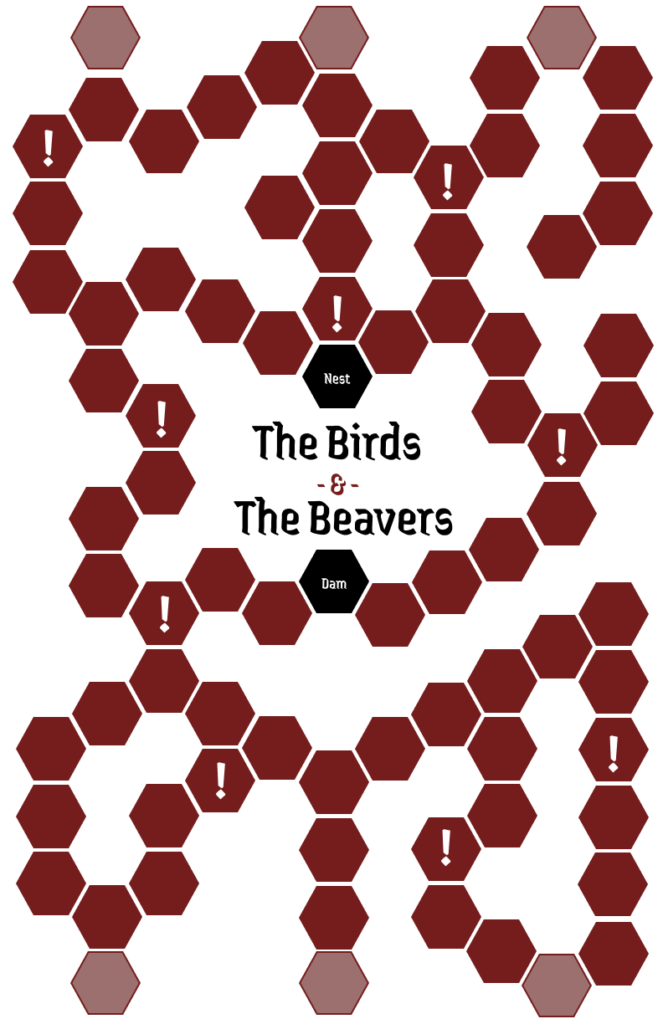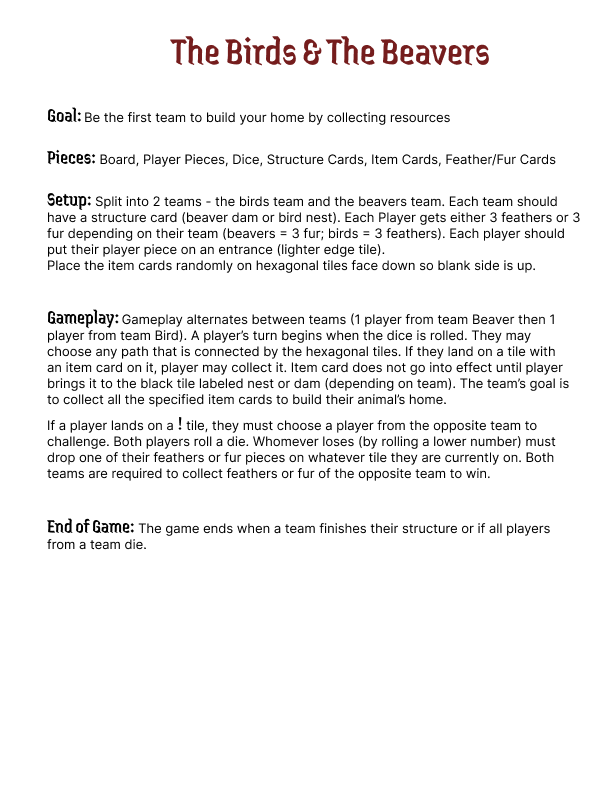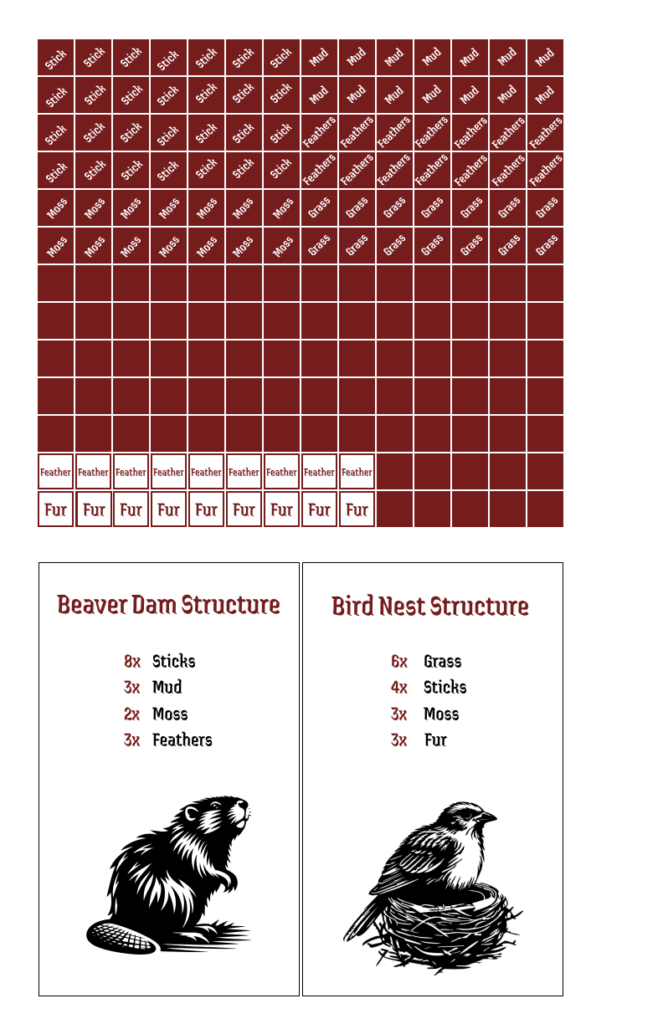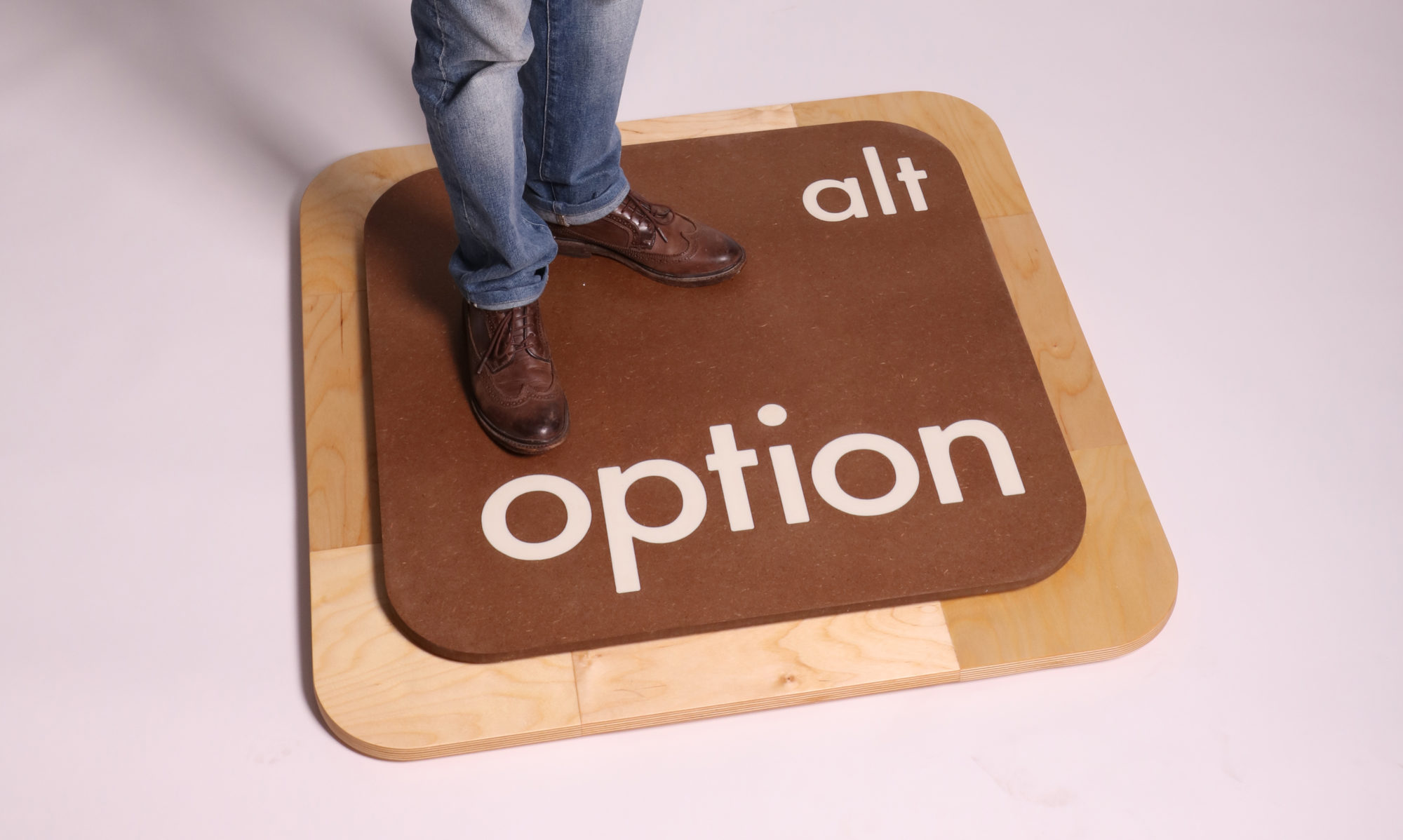



design courses, syllabi, schedules, resources and policies
Players create a group chat through text messages or any application they want. The player who spends the most time on their phone is the first prompter. The draw a prompt card from the deck and copy it exactly into the group chat. As soon as the message is sent, all other players race to type and send the exact message back to the group chat. The first to do so end gets the card as a point. If there is an issue, the first message to pop up on the promoters end wins the point. They then become the next prompter. Each player may only send one message per prompt. If they are incorrect, they are disqualified from the round. If no one is correct, the prompter draws another card and repeats the process. The first player to get 4 points wins.
1. the pieces wouldn’t stay on the small little matt to build the boat.
2. the speed aspect was a lot of fun.
3. their wasn’t really anything that i wanted to do.
4. larger matt and a way for things to stay on that board a little better without rolling would be
5. nothing need changed, its perfect.
6. wood, boat, build.
What was the most fruatrating moment or aspect of what you just played? I wouldn’t say that the game was frustrating at all, just depending on. what you would roll you would always have to fight the guards.
What was your favorite moment or aspect of what you just played? The gamble aspect of each roll, like each time you rolled it was risky.
Was there anything you wanted to do that you couldn’t? No, I dont believe so.
If you has a magic wand to wave, and you could change, add, or remove anything from the experience, what would it be? Add maybe a few more spaces that caused havoic or a way to sabatoge other players moves,.
What should be improved with the next version? Add value to the paintings
Descibe the game in 3 words? Fun, challeging, competitive
What was the most fruatrating moment or aspect of what you just played? The game wasn’t frustrating at all.
What was your favorite moment or aspect of what you just played? Looking at everyone else’s drawings and ideas for the prompts.
Was there anything you wanted to do that you couldn’t? No, I dont believe so.
If you has a magic wand to wave, and you could change, add, or remove anything from the experience, what would it be? No I wouldn’t change anything.
What should be improved with the next version? Nothing, keep it just how it is.
Descibe the game in 3 words? Fun, creative, unique
How to play Art Heist
For 5 players
SET UP
Place the five decks of cards (paintings around the room, front side facing outwards. At the start of the game each player is assigned a number from 1 to 5. Each player takes a voting card (ace through five) of every value other than theirs. This becomes relevant later.
Then each player draws a roll card. If you draw a king, you are a museum-goer, and are on the innocent team. If you draw the joker, you are the thief.
HOW TO PLAY
The thief must try to inconspicuously “steal” all five paintings by flipping them so that their back side or ‘imitation’ side is facing outward. This game is best played at a party or other crowded social gathering so that players can be easily distracted. If the thief steals all the paintings or 20 minutes has expired, they win!
The museum-goers’ goal is to catch the criminal in the act and get them voted out of the museum. At any point when someone spots a stolen painting (yes, the thief can self report) or someone catches the thief in the act, the timer is paused and all players must gather. They will have two minutes to discuss who they think the thief is. After two minutes have elapsed, the players will vote using their voting cards for the player they think is the thief.
If the voted out player was a museum goer, they are not out of the game and can still vote, but they cannot speak during the discussion periods anymore.
My play test for this game was very brief but the concept is really fun that you get to build your own ship and battle against each other. It was really fun as well as complex which was a nice touch to the game and gave it a nice competitive aspect to a very fun game.
I played this game I believe two weeks ago and the executions where done right but I feel like if you wanted to you could add the actual pictures of the sharks with the typed out fun facts(and yes I understand that this was a first draft of the game) or possibly adding a diverse selection of sharks that are more obscure species for those who know more about the marine life so they can also test themselves and see what they know about that specific species of shark. I would love to see an updated version of this!!!
I really enjoyed this game and I think it has so much potential! The art for this game could be super super cool and I hope you experiment with that!
Describe the game in 3 words. Funny, creative, dirty (a lil)
I may leave a comment on your rules post with a few more suggestions! I look forward to seeing where this game goes.